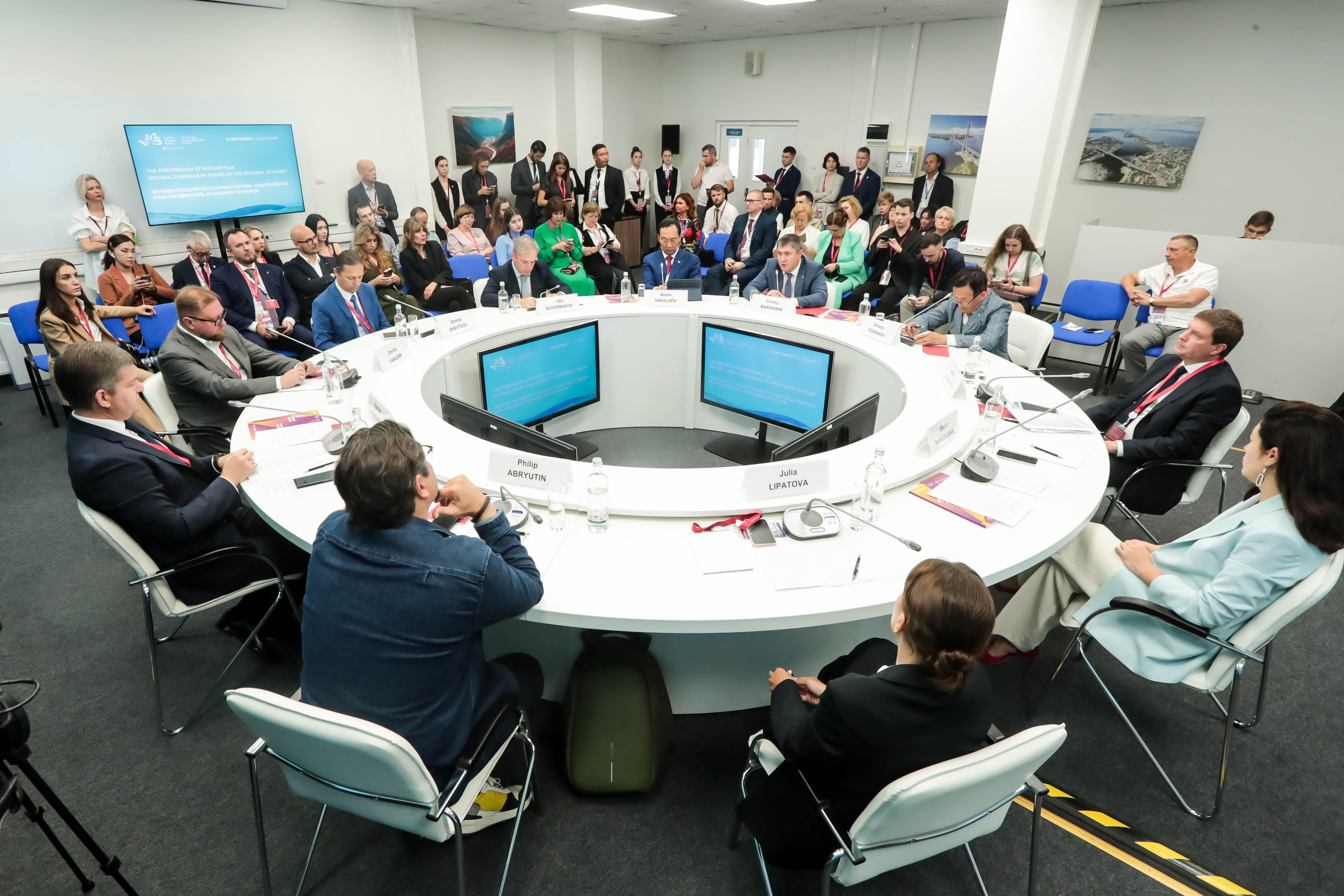The Big Screen Means Big Money for the Regions

For the creative sector to have a serious impact on GDP and GRP, the proper environment for this needs to be created first, Deputy Minister for the Development of the Russian Far East and the Arctic Elvira Nurgaliyeva said. Such an environment has already been created in the Far East: film producers have expressed great interest in the region, and up to 15 major projects (films and TV series) are filmed here per year. The ministry has calculated that the film crew spends up to 30% of a film’s budget in the region, while the tourist flow from these films also grows by 30%.
“Last year, a unified Far Eastern film commission was established for all the regions of the Far Eastern Federal District. It assembles a general list of locations, expertise, and equipment. Starting in 2024, a unified Far Eastern film rebate system will be launched [to] compensate for the expenses of crews filming in the Far East. Just this week actually, we are expecting data from the regions on who will be able to accept projects next year and how many,” Nurgaliyeva said. Several colleges in the Far East have started training technical specialists on the cinema industry. This means that film crews will not have to bring their own specialists on these trips, while the Gerasimov Institute of Cinematography, Russian Institute of Theatre Arts, and the Shchukin School will set up branches in the Far East for creative workers.
Yakutia, the flagship region for film development in Russia, has demonstrated some impressive results. “Today, we produce more than half of Russia’s regional films and have the entire spectrum covered – from comedies to original films. One of them, Maxim Arbugayev’s Haulout, as you know, was on the short list for this year’s Oscars,” Head of the Republic of Yakutia Aysen Nikolayev said. “Yakut films account for 34% of our box office and up to 60% of box office receipts,” he said. Since 2011, more than 100 films have been shot in Yakutia. The region has gained a lot of experience and a new level of expertise in this regard. The next step will involve the construction of a full-cycle film pavilion based on instructions from Russian President Vladimir Putin. The number of films produced in Yakutia is expected to double after the scheduled launch of the pavilion in late 2026.
The Perm Region has also made huge strides and its film rebate is one of the highest in the country at up to 50% of filming costs. Perm Region Governor Dmitry Makhonin said every rouble shows meaningful return on investment. As an example, he cited the films The Land of Legends and The Riot, after which the tourist flow to the places where they were filmed increased significantly, and hotels, glamping sites, and visitor centres were built. “Whereas a few years ago film crews only had 20% local workers, now their share has increased to 45%, and up to 70% for some projects. We are training specialists. For example, we have launched a film production course at the Perm campus of the Higher School of Economics,” Makhonin said. The governor said he personally meets with the film crew of each major project, discusses locations, and helps remove any barriers to filming: “We need to find a narrow-gauge railway and a steam locomotive. We are resolving these issues,” he said.
Right now is the best time to support cinema, and these investments will definitely pay off, Lenfilm Film Studio General Director Fyodor Shcherbakov said: “The country is currently experiencing a film boom. There have never been so many films being shot. There is a huge shortage of content in film distribution, so studios will not be competing. Now, because of this film boom, museum directors in St. Petersburg are complaining that tourists won’t have time [to see the local sites] because film producers are even ready to book Tsarskoe Selo and Peterhof on a permanent basis,” he said. Shcherbakov called on the regions to streamline and technologize the processes of selecting locations, securing approvals, and submitting applications for filming to the fullest extent, as has been done, for example, in Moscow, where the authorities have launched a special online service. “In the regions, the problem is that even if the film commission gives approval and the governor provides support, at the lower level you come across some official, a traffic police inspector or some other people [for example], who have their own idea of how to make a movie,” he said.
This film boom is also supported by numbers cited by Regional Cinema Support Fund Deputy Executive Director Dmitry Yakunin for 2022: 96 documentaries were shot in 44 regions, an accelerator was created for filmmakers in 14 regions, and a pitch session by regional film startups featured more than 30 innovative projects for all stages of filmmaking and film distribution.
You can watch a recording of the session ‘The Phenomenon of Russian Film: National Cinema as an Engine of the Regional Economy’ on the Innosocium Foundation’s VKontakte group https://vk.ru/video-207280740_456239249
13.09.2023
All news